GBSB Fashion Through the Ages
GBSB Global Business School Barcelona Master in Fashion Students visit the Design Museum of Barcelona exploring the evolution of fashion from French Couture to 90’s grunge. Discover the impact the Industrial Revolution and World War II have had on style and how the concept of beauty has changed through the ages.
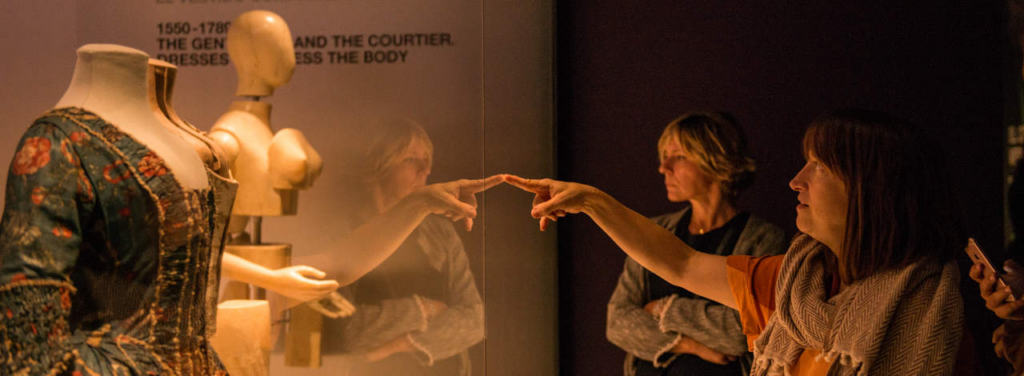
Professor of Fashion History at GBSB Global Business School, Christina Bifano, took her MA in Fashion students to the Design Museum of Barcelona to explore its Fashion Collection on the 12th of October. One of the most beautiful fashion collections, in Bifano’s opinion, the museum has an exquisite artistic display of unique pieces, most notably Spanish designs. The collection spans the years from 1550 until today.
The main focus of the visit was to look at fashion as it relates to the evolution of the human body over time. The students were also asked to analyze how the idea of beauty transformed over the years and to what extent people would go through to conform to these ideals.
The oldest pieces, from the time of the Renaissance, are known to have compressed the body. Students noted how small the mannequins were that displayed the well-preserved gowns worn by gentry and laymen alike. The body, in these days, was a “clothes horse” used for the ornate display of fabrics, dress and lace. Interior structures were used to enlarge or reduce the figure based upon what was in fashion at the time.
The Renaissance saw the perfection of tailoring techniques. Men tailored men and women tailored women, and this is still the trend today. Professor Bifano entertained students with a story from her recent travels to India where she tried to requisition a tailor to make a men’s shirtdress for her. It was nearly impossible because of the specifications. The dress was to be a man’s tailored shirt but conformed to be a woman’s dress. There was confusion as to whom would actually make the dress because it was cross-gender.
Students walked around the dark gallery looking at display cases that cast a warm light over exquisite gowns and intricate corsets. One student noted the attention to detail and quality of the older pieces on exhibit was far better as compared to the current designs. Bufano commented that the older fabrics are of better quality than pieces made today because of the sheer fact that the amount of time put into each individual piece was much greater historically. In the 16th and 17th century, fabric looms were operated by hand, thus being a timely process. As countries entered the Industrial Revolution processes started to change, and over time fabrics had to adapt to speed. Today, we have some of the most state-of-the-art fabrics, but sometimes the overall quality is lacking because the clothing articles are manufactured in mass at great speeds to meet production demands.
Entering into the space that displayed fashions from the 20th century, students were amazed at the disparity over time. Every decade was defined by a new look. Some trends repeated or evolved over time and the influence certain events had on fashion was most evident. The roaring twenties were defined by function. Clothes and shoes were designed based upon activity, for example, dance versus sport. Chanel and Jean Patou made sportswear fashionable as well as practical. It was in this decade that women’s fashion saw its first, real upheaval. Body garçon, or the “boy shape” was defined by a waistline just below the hip.
The museum had highlighted the years from 1930-1960 as the era of Haute Couture, The Artificial Silhouette. Professor Bufano took these dates and outlined greater specifics on how each decade was shaped by events, namely World War II. War rationing across the board, from food to fabric, had a significant impact on fashion, not to mention, as men headed to battlefield, women headed to the factory floor. It was in 1947, at the launch of Christian Dior’s first ever fashion show that a “New Look” graced the stage, transforming fashion. Women returned to the home to unique silhouettes, lengths of luscious fabrics and tight waists. These fresh designs made women feel sexy again.
Flying through the decades, the 1960’s was defined as a natural and free youth movement that took its influence from the 1920’s design. Moving into the 1970’s, this decade was classified by a female power movement, emanating from the 1940’s. Trends in the 1980’s were characterized as artificial, based primarily on shape. The 1990’s “anti-fashion statement” turned into its own trend. Grunge, hip-hop and various street-styles were once thought of as being anti-establishment but in the end became hot fashion.
The take away was just as Professor Bufano outlined in her opening remarks. Fashion changed tremendously though the ages. Clothes were not mere thread and fabric but an expression of self. Beauty is an ideology, and people will go to great lengths to look great and be “in” fashion.
Does this fashion and design event sound intriguing? Follow our MA Fashion students through their academic year studying at GBSB Global Business School. Fashion and design students participate in a variety of fashion and luxury events in Barcelona and greater Europe.
By Emily Dawn Szajda, GBSB Content Manager
GBSB Global Business School visit the Design Museum of Barcelona

GBSB MA Fashion students analyze fashion trends through the ages.

The Design Museum Barcelona’s unique display attracted Professor Bifano to bring her students for a lecture on fashion history.
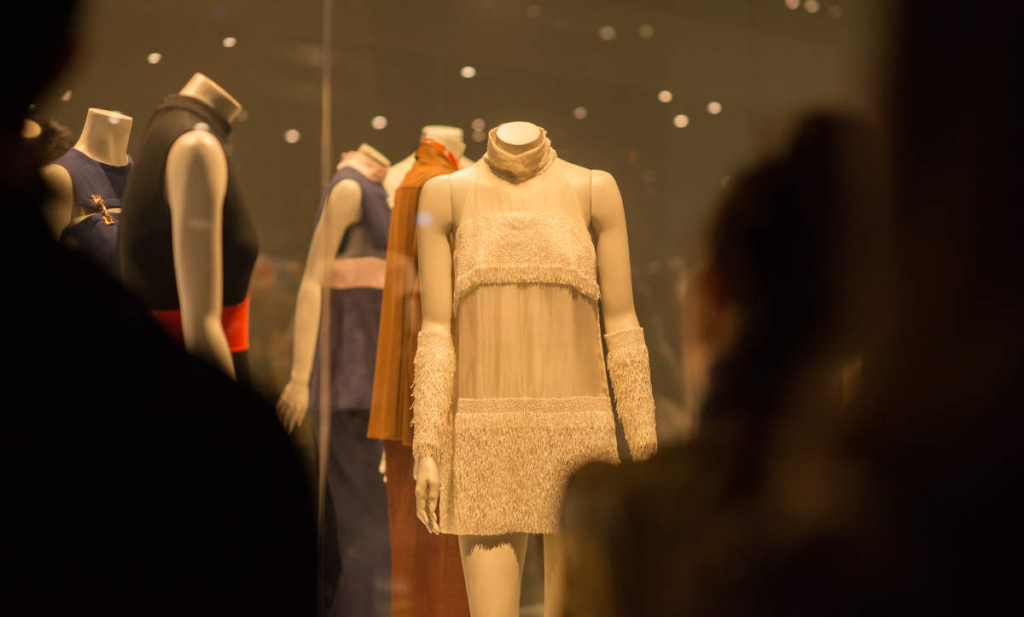
Beauty is an ideology, and people will go to great lengths to look great and be “in” fashion.
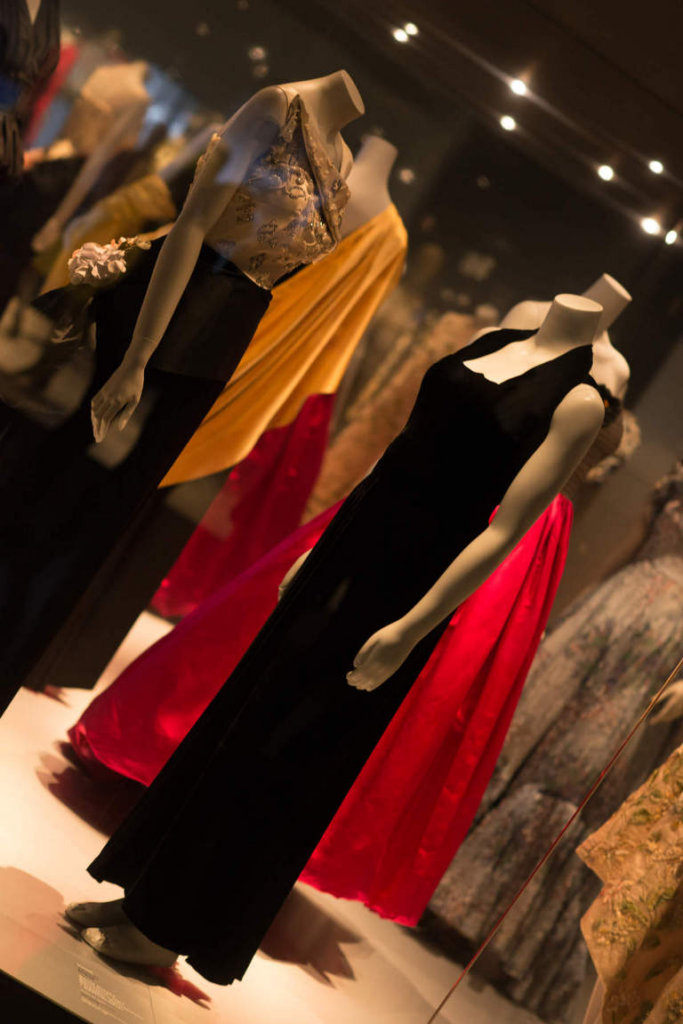
GBSB students explore fashion trends from courtier to grunge and everything in between.
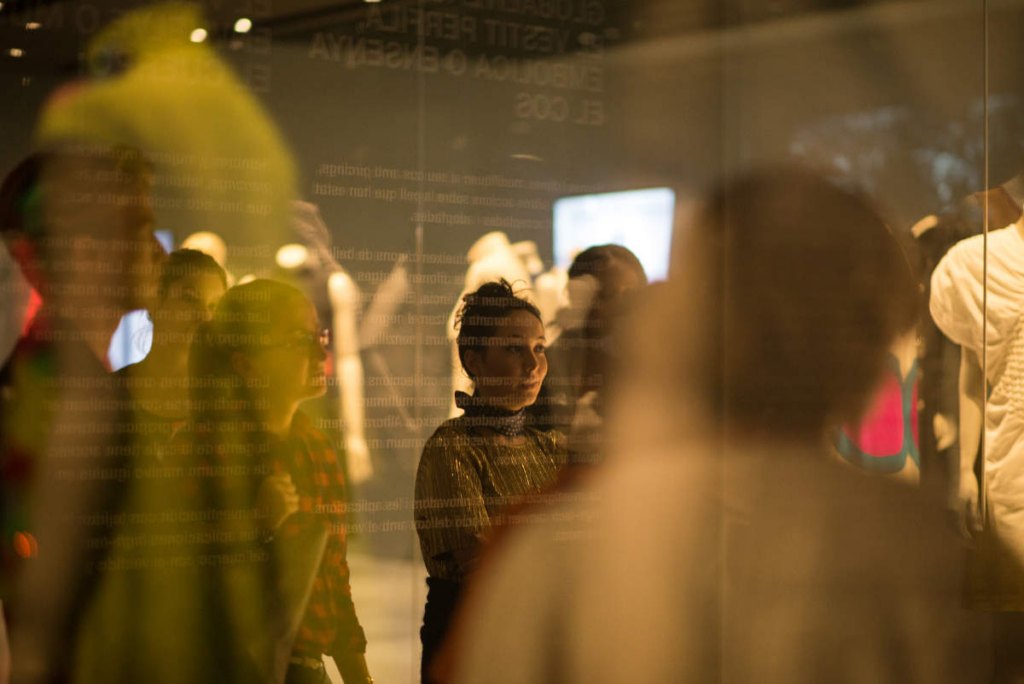
A captivated GBSB fashion history class listens intently to Professor Bifano’s stories from her recent travels to India.
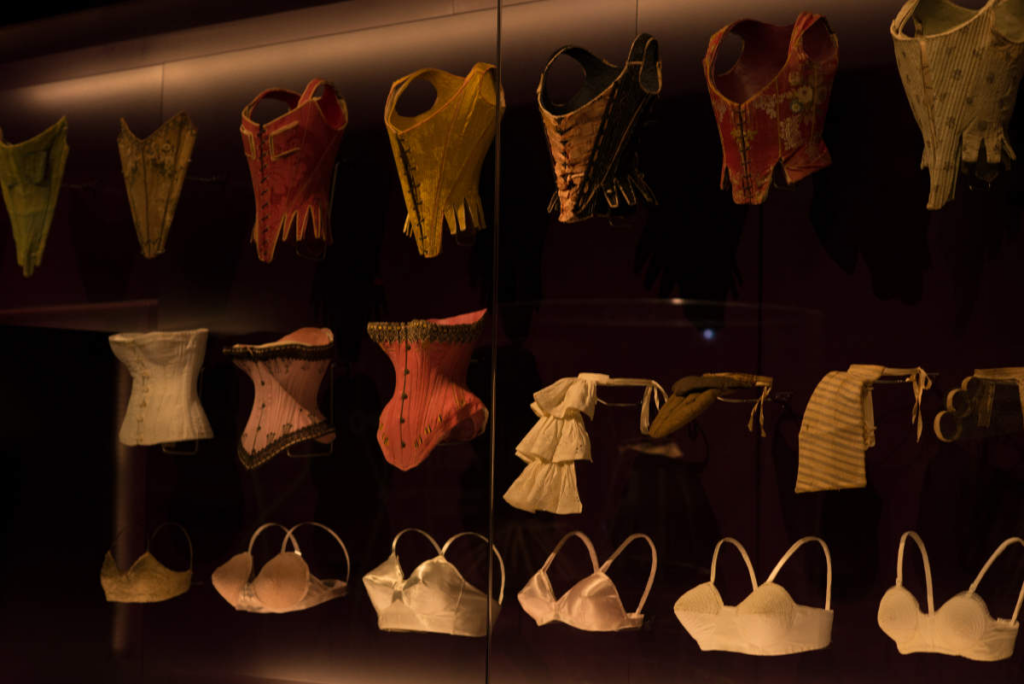
The unique displays at the Design Museum Barcelona attracts visitors and GBSB Global Business School Fashion students alike.